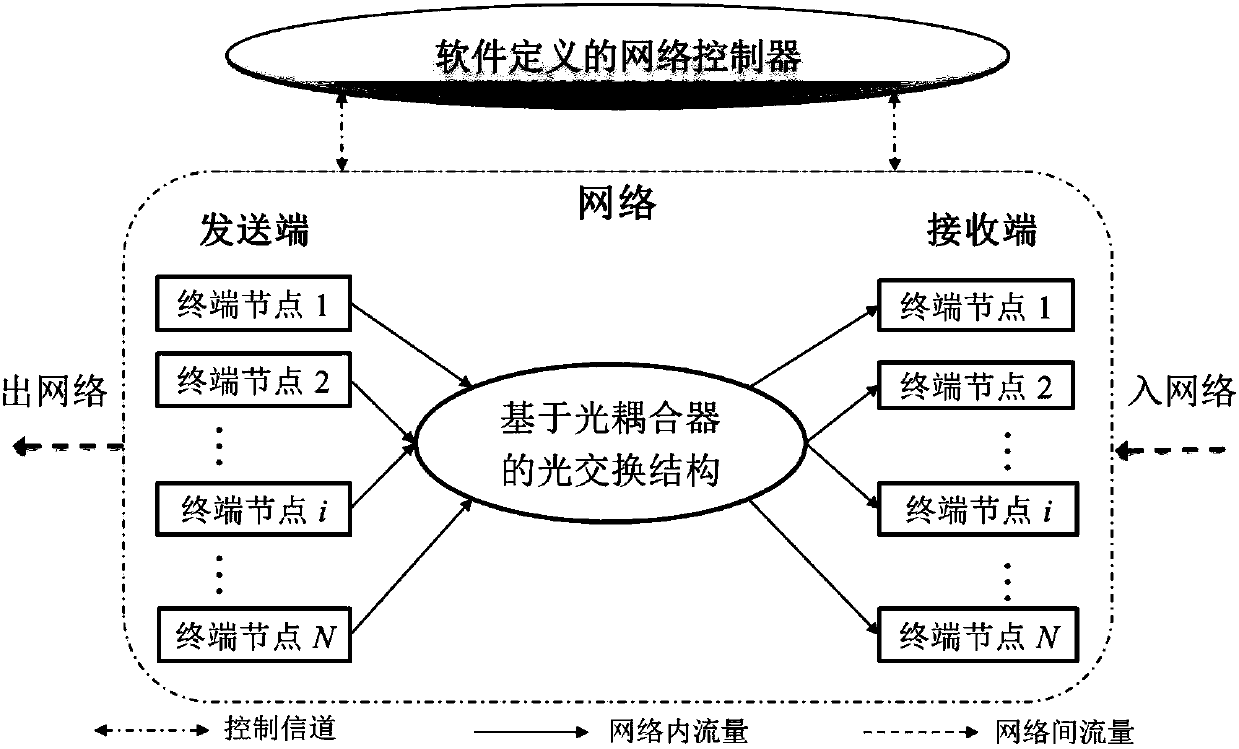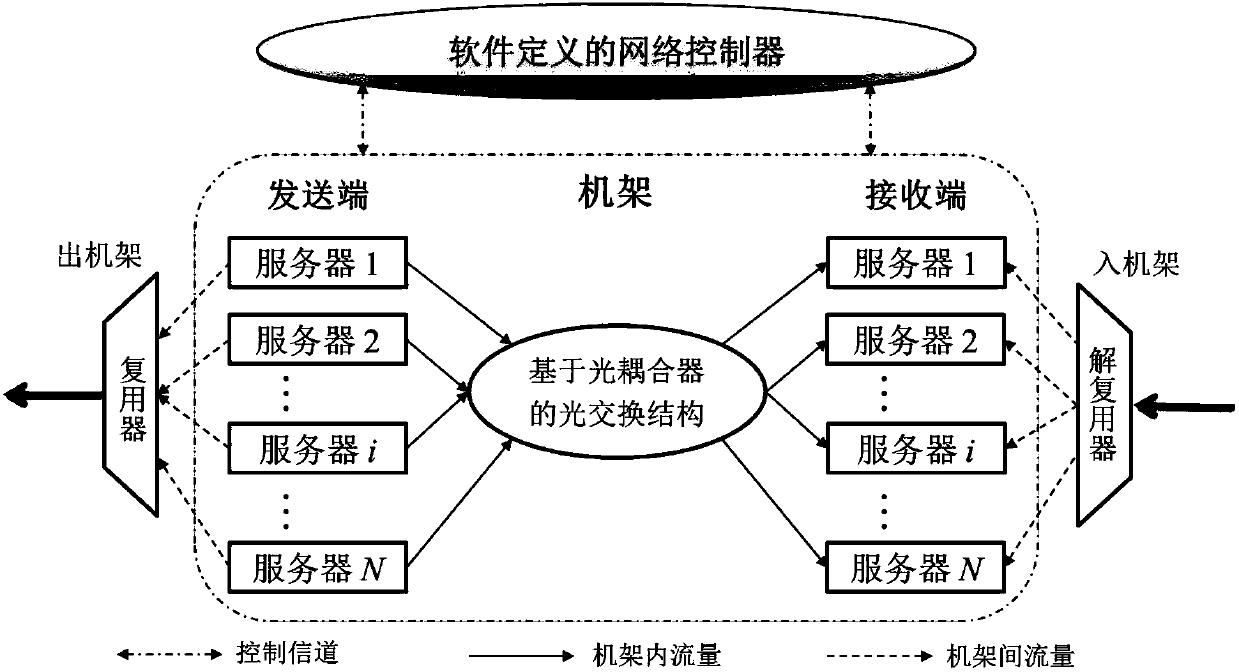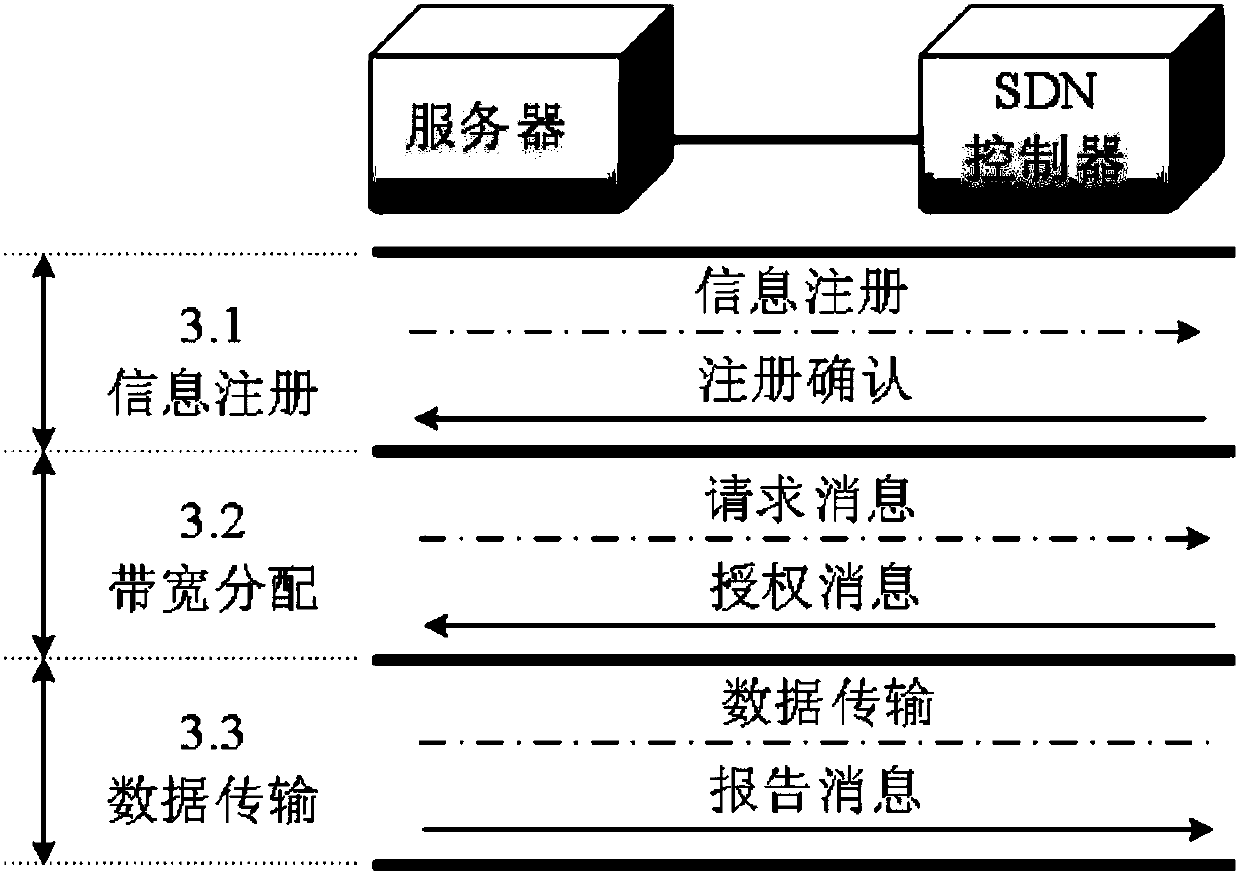Passive optical interconnection network structure based on software definition and data communication method
A software-defined and network-structured technology, applied in the field of communication, can solve problems such as large packet delay, network time extension, and poor scalability, and achieve the effects of small packet end-to-end delay, improved reliability, and improved throughput
- Summary
- Abstract
- Description
- Claims
- Application Information
AI Technical Summary
Problems solved by technology
Method used
Image
Examples
Embodiment Construction
[0035] The preferred embodiments of the present invention will be described in detail below in conjunction with the accompanying drawings; it should be understood that the preferred embodiments are only for illustrating the present invention, rather than limiting the protection scope of the present invention.
[0036] A software-defined passive optical interconnection network structure (SD-POIN, Software Defined Passive Optical Interconnection Networks), including terminal nodes, an optocoupler-based switching structure and a software-defined network controller, an optocoupler-based switch The structural interconnection of terminal nodes constitutes an optical data channel; the software-defined network controller connects each terminal node to form an electrical control channel, and the software-defined network controller collects network status information and dynamically allocates network resources for terminal nodes.
[0037] The terminal node needs to be equipped with a lig...
PUM
 Login to View More
Login to View More Abstract
Description
Claims
Application Information
 Login to View More
Login to View More - R&D
- Intellectual Property
- Life Sciences
- Materials
- Tech Scout
- Unparalleled Data Quality
- Higher Quality Content
- 60% Fewer Hallucinations
Browse by: Latest US Patents, China's latest patents, Technical Efficacy Thesaurus, Application Domain, Technology Topic, Popular Technical Reports.
© 2025 PatSnap. All rights reserved.Legal|Privacy policy|Modern Slavery Act Transparency Statement|Sitemap|About US| Contact US: help@patsnap.com



